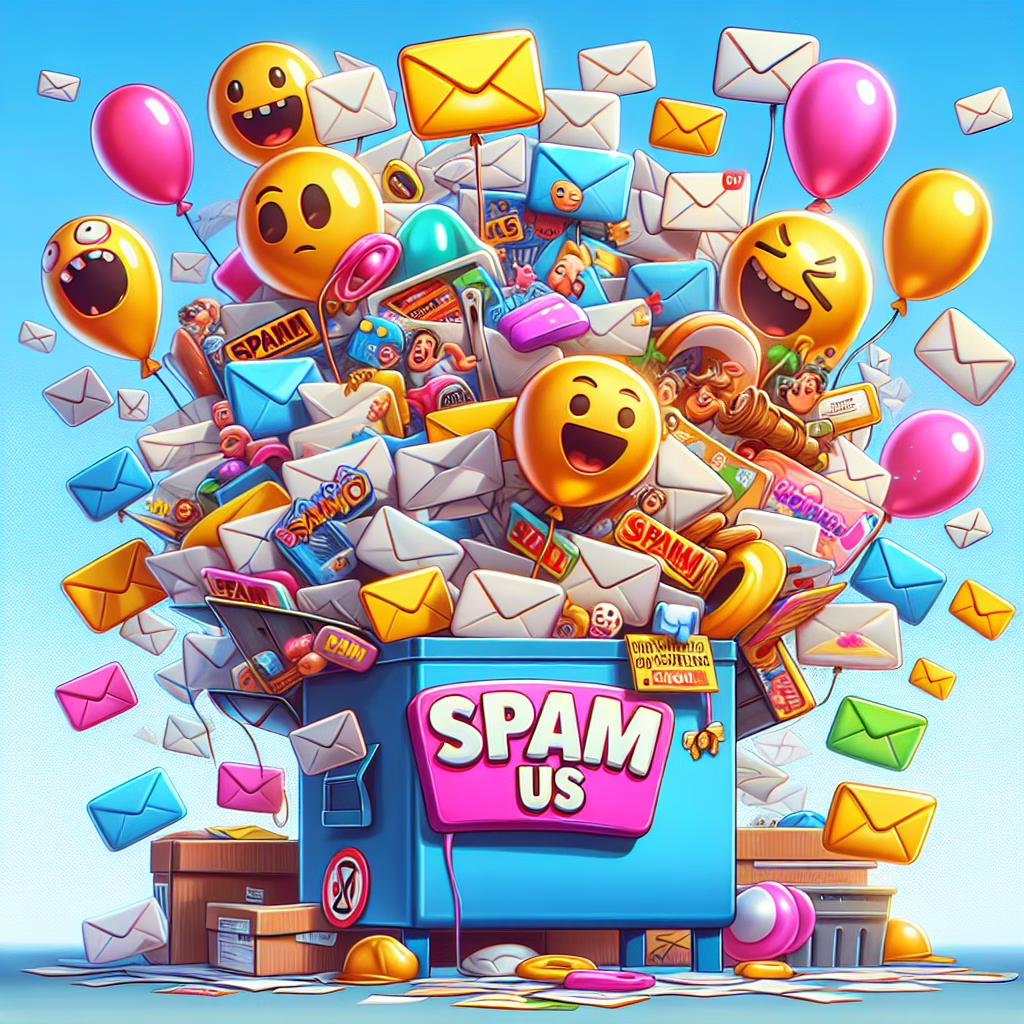In the grand theater of the internet, where memes and cat videos reign supreme, there exists a dark, shadowy corner filled with unsolicited emails. Yes, you guessed it: spam! According to recent reports, the US is the largest spammer in the world, and if you think that’s alarming, buckle up—it’s only going to get worse! Let’s dive into this slightly humorous yet enlightening exploration of what it means for us as we embrace this dubious title.
Why Are We So Good at Spamming?
First off, let’s give credit where credit is due. The United States has perfected the art of spam like no other nation. We’re not just sending your average ‘Nigerian Prince’ emails; oh no, we’ve got a whole range of spam from “you’ve won a free vacation” to “urgent updates about your bank account.” It seems like every time you check your inbox, there’s a new reason to be suspicious!
But why is the US leading this dubious race? One reason could be our love affair with technology. In a country where even your toaster can send you a tweet, it’s no surprise that spam has found a comfortable home in our digital lives. In fact, studies indicate that over 60% of all emails sent are spam. And while some might say that’s an alarming statistic, I prefer to think of it as our country’s weird talent show. Spam has truly become a cultural phenomenon!
The Impact of Spam on Our Lives
So what does being the world’s top spammer mean for everyday Americans? Well, it means that your inbox resembles a crowded freeway during rush hour—chaotic and full of unwanted guests. But don’t worry; there are ways to navigate through this digital mess!
For starters, let’s talk about filters. If you haven’t yet embraced the magic of email filters, now is the time! Like a bouncer at an exclusive club, these filters can keep out those pesky spammers trying to crash your inbox party. You can create rules that automatically send suspicious emails straight to your junk folder—because who wants to deal with unsolicited offers for miracle weight loss pills while sipping their morning coffee?
Moreover, you can also help combat this trend by being more mindful of where you share your email address. Think of it as protecting your personal information like it’s the last slice of pizza at a party—definitely something worth safeguarding!
The Future of Spam in 2025
As we peer into our crystal balls for what lies ahead in 2025, predictions about spam are not particularly rosy. Experts warn that spammers are getting smarter and more sophisticated every day. With advancements in AI and machine learning, these digital miscreants are crafting emails that look increasingly legitimate—making it harder for even the most seasoned internet users to discern friend from foe.
This means that while we may find ourselves chuckling at the absurdity of some spam messages today, tomorrow could bring an onslaught of well-crafted scams that tug at our heartstrings or play on our fears. Remember, if an email sounds too good to be true (like winning a yacht just for signing up), it probably is!
Taking Action Against Spam
So what can we do as proud citizens of the US? First off, let’s unite against spam! While we may be leading in numbers, we can also lead in awareness. Educating ourselves and others about phishing scams and malicious links is crucial. Share tips with friends and family—because nothing says love like helping someone avoid becoming a victim!
Furthermore, advocating for better regulations on spam can make a difference. As consumers, we have power! By supporting legislation aimed at curbing spam tactics and holding companies accountable for their practices, we take steps toward cleaning up our digital landscape. Remember, the more we speak up about spam, the more we can protect our US digital spaces.
A Comedic Reflection
In conclusion, while being crowned the largest spammer in the world might not come with a trophy or even a high-five from your peers, it’s an opportunity for us to reflect on our email habits—and perhaps have a little laugh along the way. After all, if life hands you lemons (or unsolicited emails), why not make some lemonade?
We invite you to share your thoughts on this pressing issue—or perhaps your most entertaining spam story—in the comments below! Let’s turn this digital frown upside down together!
A huge thank you to TechRadar for shedding light on this intriguing topic! Together, let’s tackle the spam phenomenon that floods our inboxes and affects our daily lives.

